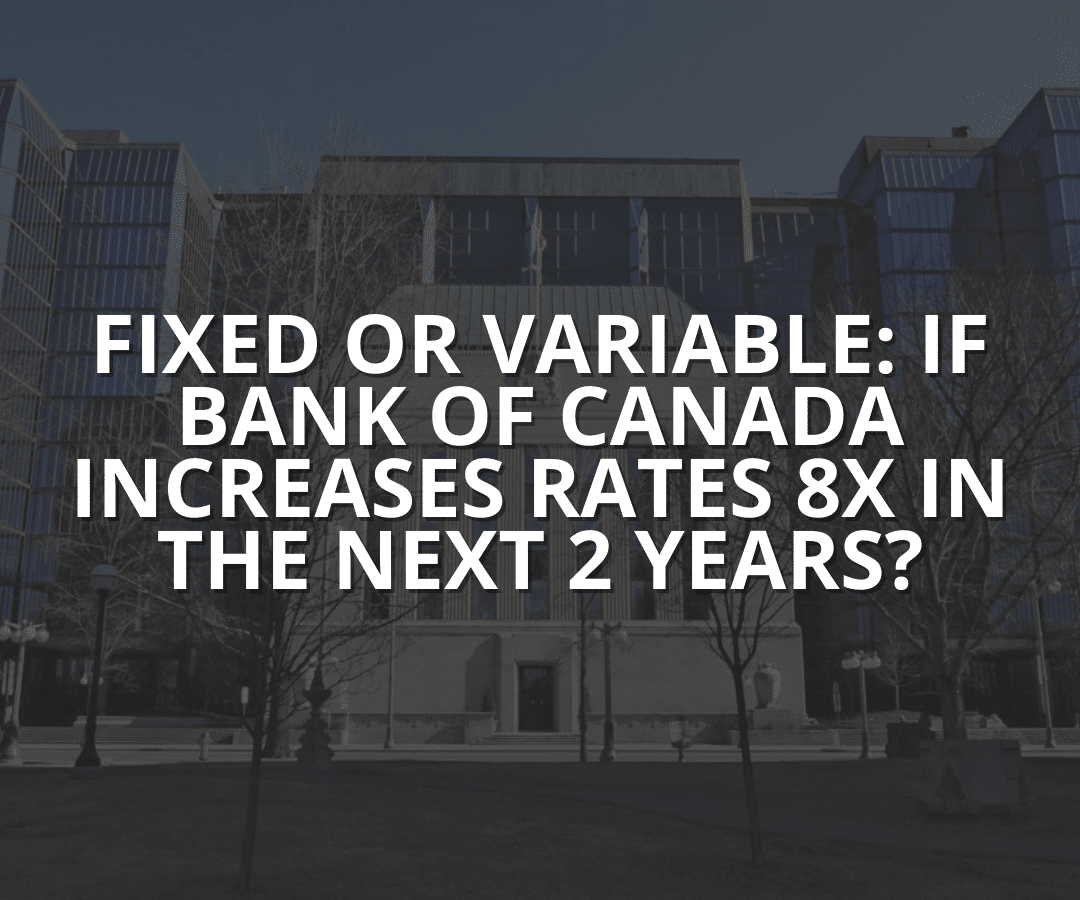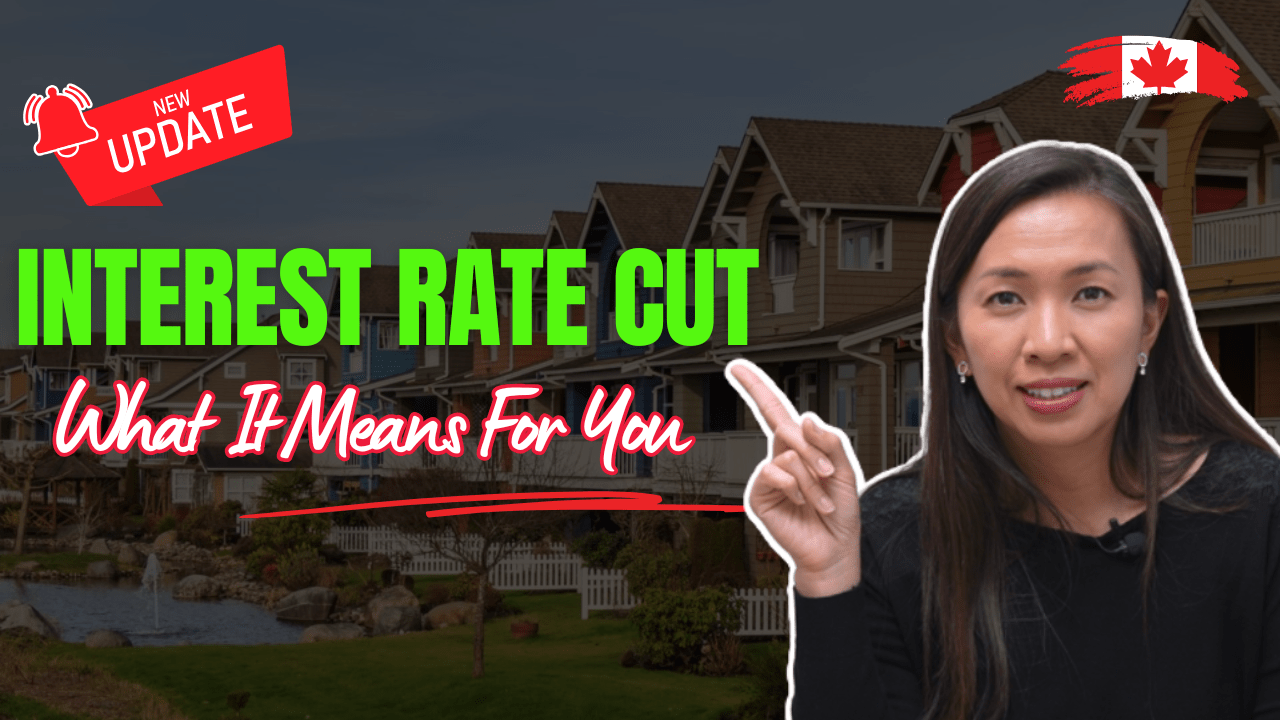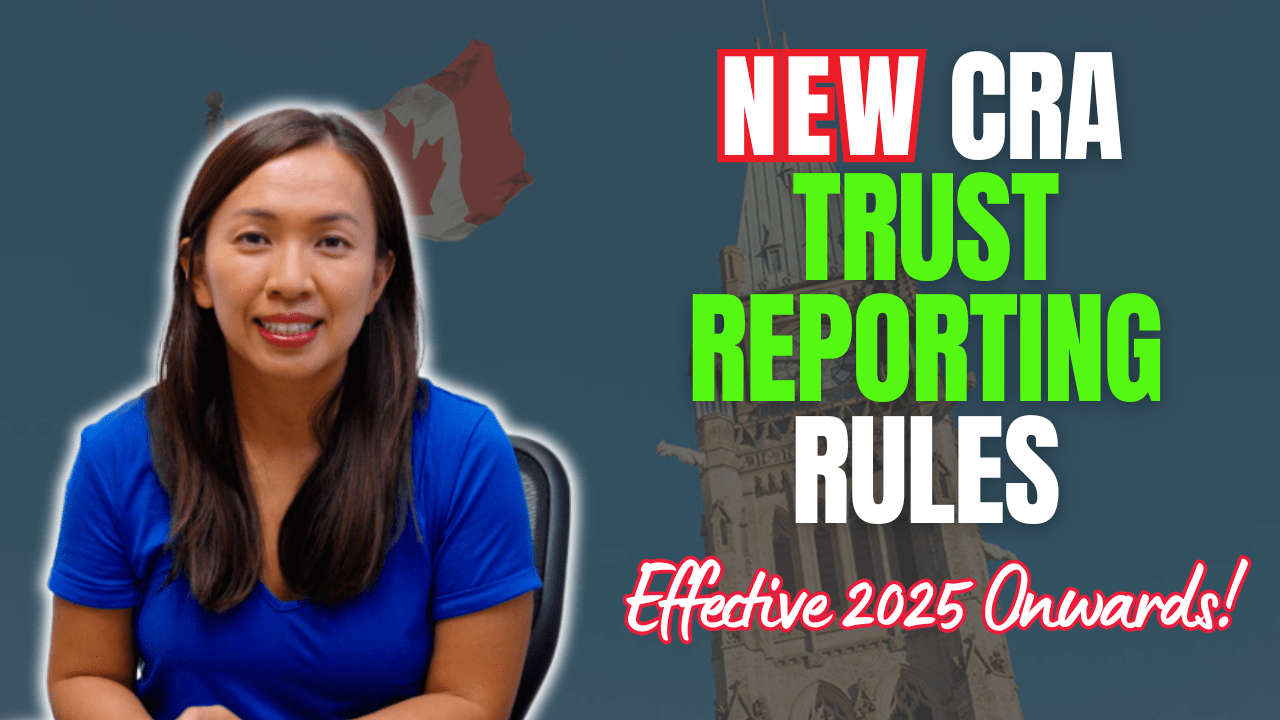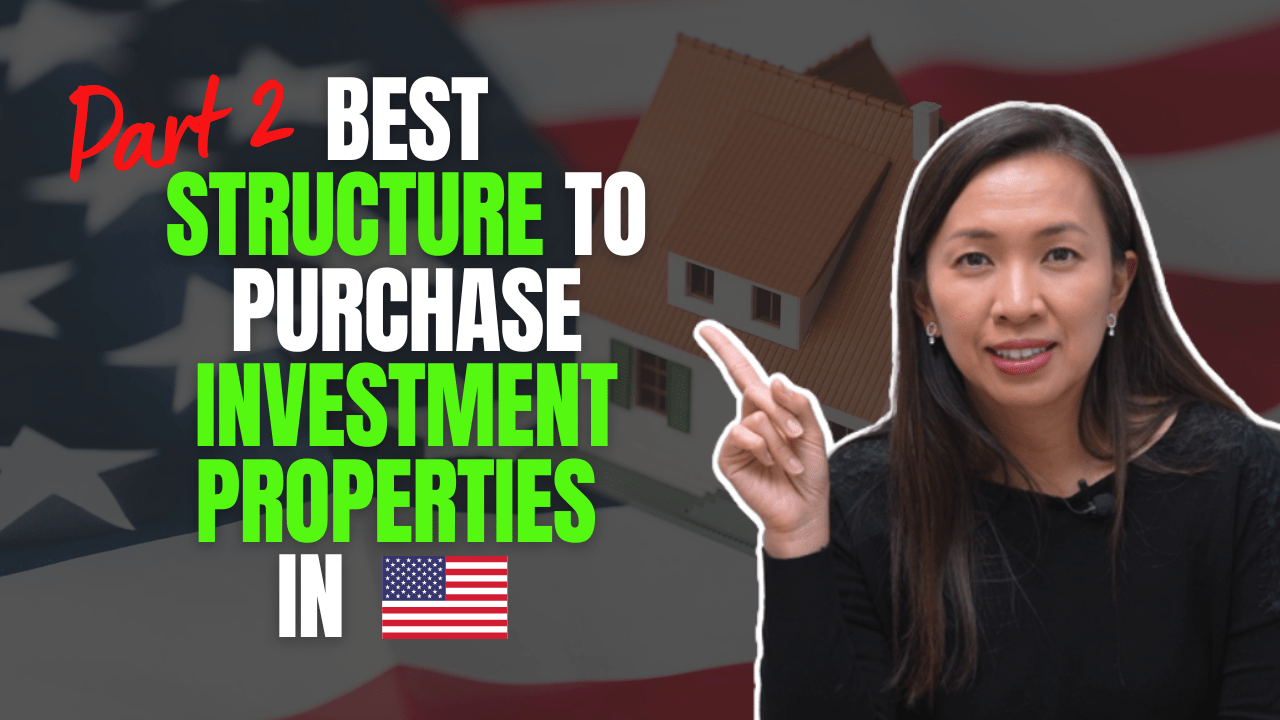A couple of weeks ago, Financial Post released an article that says Scotiabank sees eight Bank of Canada interest rate hikes by end of 2023.

8 interest rate hikes! Yikes!
As a real estate investor myself, I couldn’t help but wonder – is this a good time to lock in the low rates by converting my variable interest rate mortgage to a fixed one?
I had converted variable rate mortgage to fixed-rate mortgage when my variable rate “discount” was high.
The truth is, I’ve found myself paying for tens of thousands of penalties every time I committed to a fixed-rate mortgage.
It turns out that I changed my plans more often than I had intended and I incurred tens of thousands of dollars of penalties.
Here’re the top decision factors as to whether you should convert your variable rate mortgage to a fixed-rate mortgage.
1. What is the rate differential between variable rate and fixed rate?
I consulted with my mortgage broker Kevin and found that the 5-year variable rate offered by one of the big banks is at 1.60% and upwards and 5 year fixed rate is 2.69%.
In my mind, I would have opted for a variable rate in a heartbeat. 😊
If you borrow $800K from the bank with 30-year amortization, going variable can save you $437 on a monthly basis.
That’s a lot of money!
But if you were to refinance a property, the situation can be more complicated.
When you refinance to get a bigger mortgage, the bank may only offer you a fixed-rate mortgage (that was the case with me when I moved my mortgages to a different bank). I was able to qualify for a bigger amount with a fixed-rate mortgage, as compared to the variable-rate mortgage.
On the other hand, if you were to simply convert an existing variable rate mortgage to a fixed rate mortgage worrying that the Bank of Canada will raise the rate 8x in the next few years, a detailed comparison should be conducted to see whether it makes sense to do so or not.
2. What’s your plan with your property?
In early 2020, I converted all of my variable mortgage to a fixed mortgage with the same bank.
No penalty was triggered.
At the end of 2020, I decided to move three of these mortgages to my corporation with a different bank to free up some of my personal credit to qualify for a bigger mortgage in my personal name.
Of course, breaking a mortgage from one bank and refinance it with a different bank triggers a mortgage penalty.
We paid tens of thousands of dollars to break free and buy back our credit.
Lessons learned: if you are planning to refinance the property or sell your property soon, don’t go fixed.
If you still want to go for fixed, try committing to only one year or two year term fixed rate mortgage, instead of five year term fixed mortgage.
The mortgage penalty on a fixed-rate mortgage is calculated based on the greater of interest rate differential or three months interest. Typically penalty calculated based on the interest rate differential on the outstanding balance with the remaining term is significantly higher that of three months interest.
Mortgage penalty on a variable rate mortgage is calculated based on the 3 months’ interest outstanding.
As you can see, the cost of breaking a fixed-rate mortgage can be a lot more expensive.
If you plan to sell or refinance the mortgage in the near future, a fixed rate is less preferred.
3. Is the mortgage interest and penalty deductible?
If you are breaking a higher fixed-rate mortgage to convert to a lower variable rate mortgage, you may want to consider the cost of the mortgage penalty.
If you are breaking a mortgage for the purpose of investment, chances are, the mortgage penalty incurred is tax deductible.
If you are breaking a mortgage of a rental property to pay off your personal mortgage, the deductibility of the mortgage penalty can be trickier.
Depending on your particular situation, if the mortgage penalty can be deductible as an expense, the penalty is then less expensive than the mortgage penalty that isn’t tax-deductible.
Be sure to consult with a real estate accountant that knows these rules well before making a decision.
Just because you can write it off, does not mean that there’s no after tax cost.
Now…here’re two hacks that I apply in my personal portfolio:
1. Always pick variable, but pay fixed-rate mortgage amount
If I were to borrow $800K from the bank to purchase a rental property, I would opt for a variable rate.
Variable-rate at 1.60% means that my monthly payment amount = $2,797.46
Fixed-rate at 2.69% means that my monthly payment = $3,234.26
For those investors who want peace of mind that their monthly payment won’t go up in the next few years, here’s what I would do…
Sign up for a variable rate, but increase your monthly mortgage payment amount to the fixed amount.
Using the example above, the bank requires me to pay $2,797.46 if I go variable.
I would instruct the bank to make a payment of $3,234.26 instead – so I am already used to paying a higher amount.
The extra $437 payment that I make goes straight to pay down my outstanding mortgage on a monthly basis.
At the end of one year, my mortgage outstanding amount is lowered by $5,306 as compared to opting in for the fixed mortgage.
My cash outflow is exactly the same, but the extra goes straight to my mortgage principal paydown, which also carries a compound effect on my monthly mortgage payment.
By the end of the second year assuming there is no rate increase, my mortgage outstanding is lowered by $10,757 cumulatively.
If you are concerned, go for variable, but pay as if you’re committed to fixed-rate mortgage.
2. Take advantage of mortgage prepayment amount to minimize mortgage penalty
Not everyone can qualify under for variable rate mortgage. I was a good example back in 2020.
If I ever have to break a mortgage, regardless of fixed-rate or variable rate, I always try to make a mortgage prepayment so that I can minimize the mortgage penalty I would otherwise owe.
As mentioned above, the mortgage penalty on a fixed-rate mortgage is calculated based on the greater of interest rate differential or three months interest. Typically penalty calculated based on the interest rate differential on the outstanding balance with the remaining term is significantly higher than that of three months interest.
The mortgage penalty on a variable rate mortgage is calculated based on the 3 months’ interest outstanding.
Mortgage penalties are calculated based on the amount outstanding. The more you can pay it off, even if it means using your home equity line of credit short-term, the less penalty you will incur.
Enough talk about rates, hopefully, the Bank of Canada won’t raise our rates 8x in the next two years.
Until next time, happy Canadian Real Estate Investing.
Cherry Chan, CPA, CA





